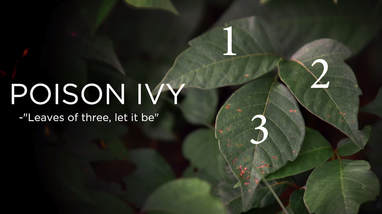Images by Andrew Huang, Virginia Tech student
Summer is in full swing, and so is the risk of poison ivy rash. For the majority of adults (about 80%) direct contact with any part of poison ivy plant results in allergenic contact dermatitis (commonly called poison ivy rash). The natural product produced by poison ivy/oak/and sumac that is responsible for causing allergenic dermatitis is called urushiol. The symptoms can range from minor reddening and itching, to extensive swelling with oozing puss filled blisters (yuck!). Perhaps the worst part is the incessant itching! Moreover, in 2006 and 2007 two scientific studies demonstrated that increasing atmospheric CO2 levels result in poison ivy grew faster, made more biomass, and produced more allergenic forms of urushiol. Expect to see more (and more noxious) poison ivy in your future!
There is currently no prophylactic treatment to prevent poison ivy rash before exposure to the plant. That means identification and avoidance is your best “medicine” for preventing poison ivy rash. To this end, the my laboratory at Virginia Tech is developing a public education and engagement social media campaign called The ITCHY Project. This stands for Investigating Toxicodendron Change and Habitat for Years, hence the acronym ITCHY. We recently developed a video called “The Familiar Stranger” focusing on poison ivy identification to help the public accurately identify poison ivy. You can see “The Familiar Stranger” on The ITCHY Project Facebook page (www.facebook.com/theitchyproject). Here are some takeaways about identifying this “familiar stranger”.






 RSS Feed
RSS Feed